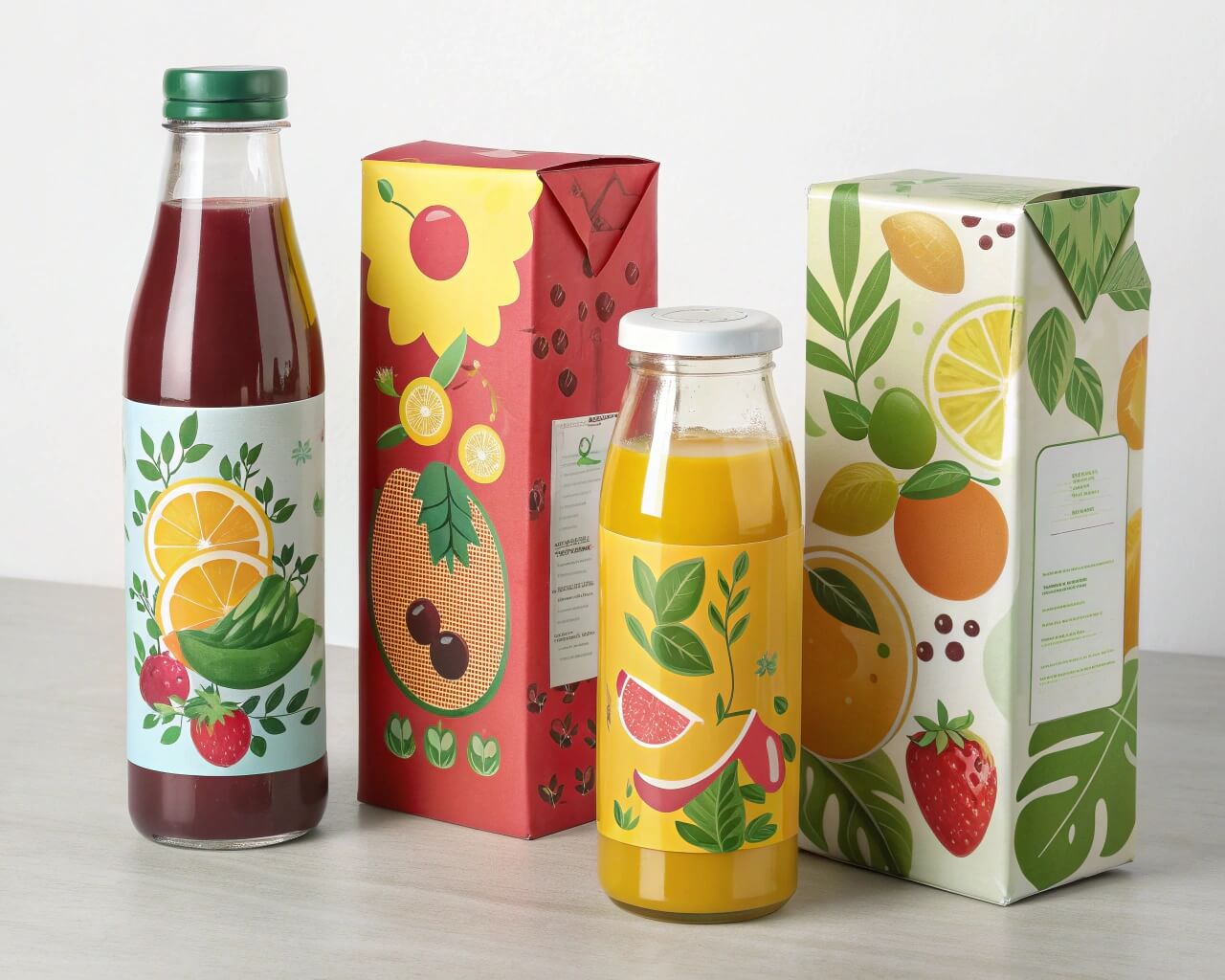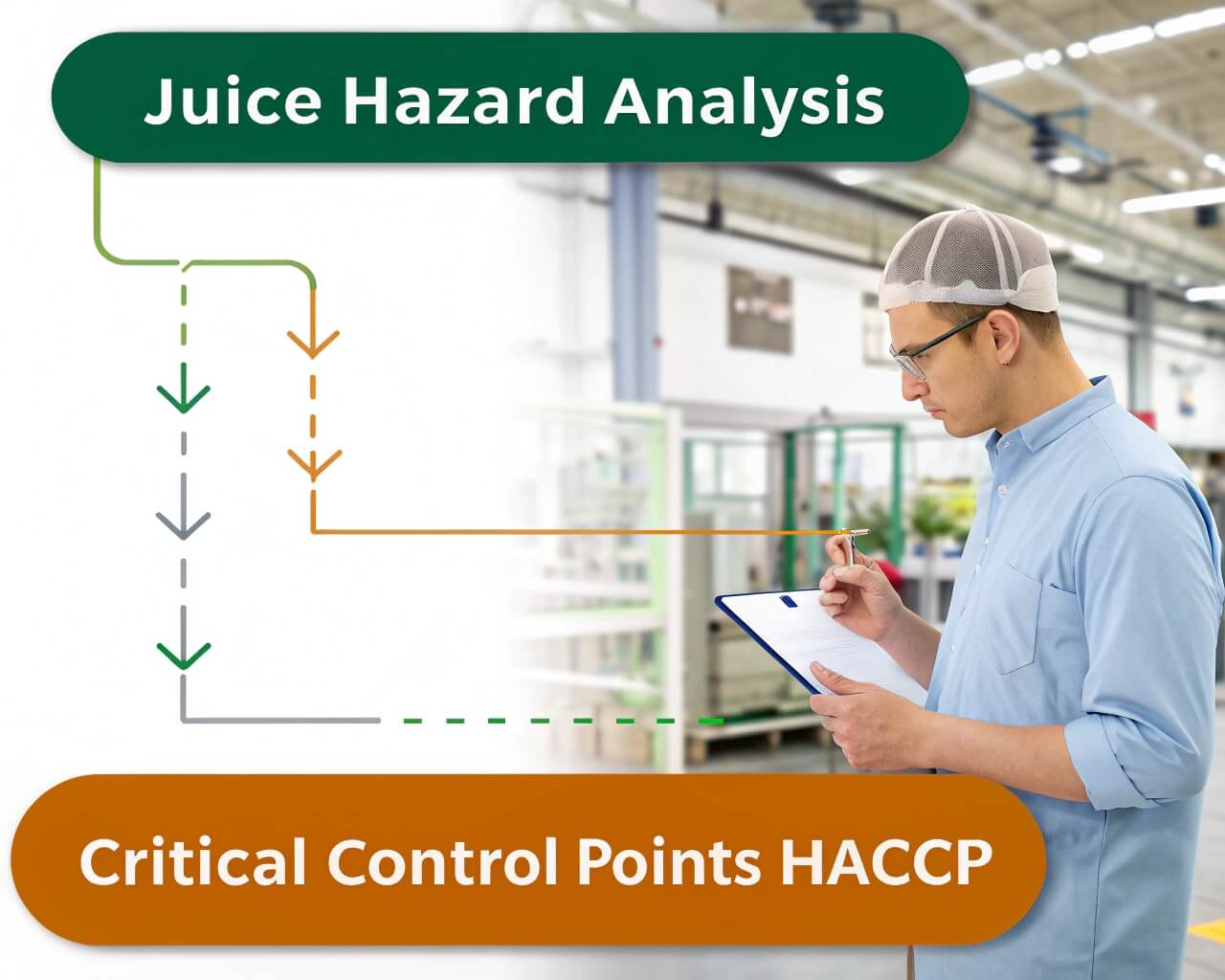Worried about chemicals leaching from packaging into your juice? Concerns about plastic safety are valid. We ensure our juice bags meet strict standards for your peace of mind.
Yes, juice bags are generally safe when made from food-grade materials and produced under strict quality control. Look for bags made from BPA-free plastics like PET or PE, often layered with aluminum for protection, and ensure they meet food safety certifications.

Understanding what makes a juice bag safe involves looking at the materials used and the regulations producers must follow. Let’s explore these details so you can feel confident about the packaging you choose.
What are juice bags?
Confused about different juice containers? Flexible bags seem convenient, but what are they really made of? Let us clarify what constitutes a modern juice bag.
Juice bags are flexible pouches, often with a spout, designed for packaging juice. They typically use multiple layers of food-grade plastic and sometimes aluminum foil for barrier properties, ensuring freshness and safety.

Juice bags, especially the popular spouted pouches (often called Doypacks), offer a modern alternative to traditional bottles and cartons. They are designed for convenience, portability, and efficient storage. Let’s look deeper into their construction.
Materials Used in Juice Bags
The safety and effectiveness of a juice bag depend heavily on the materials used. Most are multi-layered structures, combining different materials to achieve desired properties like strength, barrier protection (against oxygen and light), and sealability. Common food-grade materials include:
- PET (Polyethylene Terephthalate): Often used as the outer layer for printability and stiffness. It provides a good barrier against oxygen.
- PE (Polyethylene): Frequently used as the inner layer (the one contacting the juice) because it’s inert, flexible, and forms strong seals. It’s considered very safe for food contact.
- Nylon (Polyamide): Sometimes included for puncture resistance and strength.
- Aluminum Foil (AL): Provides the best barrier against light, oxygen, and moisture, significantly extending shelf life. Often used as a middle layer.
- EVOH (Ethylene Vinyl Alcohol): Used as a high-oxygen barrier layer, especially in transparent pouches where aluminum isn’t used.
Common Juice Bag Structures
Different combinations create different types of pouches:
| Layer Combination Example | Key Features | Typical Use |
|---|---|---|
| PET / AL / PE | Excellent barrier (light, oxygen, moisture) | Long shelf-life juices |
| PET / VMPET / PE | Good barrier, metallic look (VMPET is metallized PET) | Juices needing good protection |
| PET / Nylon / PE | Strong, puncture-resistant, good oxygen barrier | Juices requiring durability |
| PET / PE or PET / EVOH / PE | Transparent, good oxygen barrier (with EVOH) | Juices where visibility matters |
As manufacturers at XINYUAN, we carefully select material combinations based on the specific juice product, required shelf life, and processing method (like hot-fill or pasteurization) to ensure both safety and quality.
What is the best packaging for fruit juice?
Choosing juice packaging is tough. Glass feels premium, cartons are common, but are bags better for freshness or cost? Let’s weigh the options.
The "best" packaging depends on priorities like shelf life, cost, sustainability, and branding. Flexible juice bags offer excellent protection, are lightweight, reduce transport costs, and offer great branding space, making them a strong contender.

Selecting the ideal packaging for fruit juice involves balancing several factors. While traditional options like glass bottles and cartons have their place, flexible pouches (juice bags) present compelling advantages. Let’s compare them.
Comparing Juice Packaging Options
Each packaging type has pros and cons:
- Glass Bottles:
- Pros: Excellent barrier, perceived as premium, recyclable.
- Cons: Heavy, breakable, higher transport costs, higher initial cost.
- PET Bottles:
- Pros: Lightweight, shatterproof, recyclable, good barrier properties.
- Cons: Can have environmental concerns (plastic waste), barrier not as absolute as glass or foil laminate.
- Cartons (e.g., Tetra Pak):
- Pros: Good barrier (often multi-layer including aluminum), lightweight, efficient shape for packing.
- Cons: Recycling can be complex (multi-material), perceived quality sometimes lower than glass.
- Flexible Juice Bags (Spouted Pouches):
- Pros: Excellent barrier potential (with foil), very lightweight, lowest transport costs, less material usage than rigid containers, convenient (spouts, resealable), large surface for branding, shatterproof.
- Cons: Recycling infrastructure still developing for multi-layer plastics, potential consumer perception issues (less traditional).
Why Juice Bags Often Stand Out
For many applications, juice bags offer a superior balance:
| Feature | Glass Bottles | PET Bottles | Cartons | Juice Bags (Flexible Pouches) |
|---|---|---|---|---|
| Weight | Heavy | Light | Light | Very Light |
| Transport Cost | High | Moderate | Moderate | Low |
| Breakage Risk | High | Low | Low | Very Low |
| Barrier Quality | Excellent | Good | Very Good | Excellent (with AL) |
| Material Usage | High | Moderate | Moderate | Low |
| Convenience | Moderate | Good | Good | Excellent (spout, shape) |
| Branding Area | Moderate | Moderate | Good | Excellent |
| Sustainability | Recyclable | Recyclable | Complex Recy. | Lower Material, Dev. Recy. |
From our experience at XINYUAN, brands increasingly choose flexible pouches not just for cost savings on materials and logistics, but also for the consumer convenience and shelf appeal they offer. They provide excellent product protection, ensuring the juice stays fresh.
What is juice HACCP?
Hearing about HACCP for juice safety? It sounds complicated, leaving you unsure if your juice is truly safe. Let’s simplify this important safety standard.
Juice HACCP is a mandatory food safety system required by regulators like the FDA. It identifies potential hazards (biological, chemical, physical) in juice production and sets up controls to prevent them, ensuring safer juice for consumers.

HACCP stands for Hazard Analysis and Critical Control Points. It’s a systematic, science-based approach to food safety that moved from reactive (testing finished products) to proactive (preventing problems during production). For juice, specific regulations mandate its implementation.
Key Elements of Juice HACCP
The FDA’s Juice HACCP regulation focuses primarily on controlling microbiological hazards, but also addresses chemical and physical ones. Here’s how it generally works:
- Hazard Analysis: Identify potential biological (like E. coli, Salmonella, Listeria), chemical (like cleaning agents, allergens, pesticides), and physical (like glass, metal) hazards associated with the specific type of juice and production process. Packaging materials are considered here too – ensuring they are food-grade and don’t introduce hazards.
- Identify Critical Control Points (CCPs): Find points in the process where control must be applied to prevent or eliminate a hazard, or reduce it to an acceptable level. For juice, the pasteurization or equivalent treatment step (to achieve 5-log reduction) is almost always a CCP. Washing fruit might be another.
- Establish Critical Limits: Set maximum or minimum values for control measures at each CCP to ensure the hazard is controlled. For pasteurization, this would be specific time and temperature requirements.
- Establish Monitoring Procedures: Define how CCPs will be monitored to ensure they stay within critical limits. This involves regular checks and recording data (e.g., temperature logs).
- Establish Corrective Actions: Predetermine steps to take if monitoring shows a CCP is not under control. This could involve reprocessing or discarding affected juice.
- Establish Verification Procedures: Use tests, audits, and reviews to confirm the HACCP system is working effectively. This includes calibrating monitoring equipment.
- Establish Record-Keeping and Documentation: Maintain detailed records of the hazard analysis, CCP monitoring, corrective actions, and verification activities.
Packaging in Juice HACCP
Packaging plays a role in the HACCP plan. The hazard analysis must consider if the packaging itself could introduce hazards (e.g., chemical migration from non-food-grade materials) or if it fails to protect the juice after processing (e.g., poor seals allowing recontamination). Using reputable suppliers like us at XINYUAN, who provide food-grade materials with documentation, helps juice producers meet their HACCP requirements for packaging.
What is the 5 log reduction for juice?
You see "5-log reduction" mentioned for juice safety, but what does this technical term actually mean for your drink? Is it enough protection? Let’s break it down.

The term "log reduction" refers to a 10-fold (or 90%) reduction in microorganisms. Therefore, a 5-log reduction signifies a decrease in pathogen levels by a factor of 100,000 (10^5). This standard was largely driven by outbreaks linked to unpasteurized juice, particularly involving pathogens like E. coli O157:H7 and Salmonella.
Why 5-Log Reduction is Crucial
- Target Pathogen: The regulation requires achieving this reduction for the "pertinent microorganism," which is defined as the most resistant pathogen likely to occur in that specific type of juice. For apple juice, this is often E. coli O157:H7 or Cryptosporidium parvum. For orange juice, it might be Salmonella.
- Public Health: Achieving a 5-log reduction significantly minimizes the risk of foodborne illness from consuming juice, protecting consumers, especially vulnerable populations like children, the elderly, and those with weakened immune systems.
- Mandatory Requirement: For most juices sold wholesale or interstate in the US, the FDA mandates that producers implement HACCP and achieve this 5-log pathogen reduction through a validated process.
How is 5-Log Reduction Achieved?
Several methods can achieve this level of microbial kill:
- Thermal Pasteurization: The most common method involves heating the juice to a specific temperature for a set duration (e.g., 160°F or 71.1°C for 6 seconds for apple juice).
- High-Pressure Processing (HPP): A non-thermal method using extremely high pressure to kill microbes. It can preserve more of the juice’s fresh flavor and nutrients compared to heat pasteurization.
- UV Irradiation: Using ultraviolet light can effectively treat some juices, particularly clearer ones like apple cider.
- Other Approved Methods: Research continues into other effective non-thermal methods.
The chosen method must be scientifically validated to consistently achieve the 5-log reduction for the target pathogen in the specific juice product. Packaging must then maintain this safety, preventing recontamination after the treatment step. This means using packaging with reliable seals and adequate barrier properties, something we focus on at XINYUAN.
Conclusion
Juice bags are safe when made with food-grade materials by reliable manufacturers following safety rules like HACCP. At XINYUAN, we prioritize safety and quality in every bag we produce.

